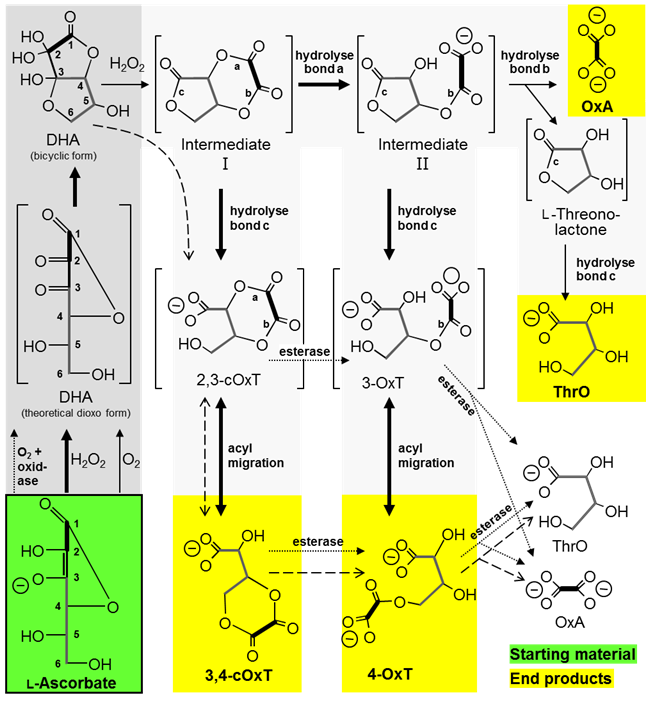
Alternative pathways of ascorbate breakdown in the plant cell wall
Proposed pathways of ascorbate catabolism. Starting material and major end-products, dark grey background; known oxidation steps, mid-grey background; newly proposed intermediates, pale grey background. Ascorbate (bottom left) is rapidly oxidized to DHA, which is shown in its conventional dioxo form (centre left) and as the hemiketal monohydrate that predominates in aqueous solution (top left). The C2 fragment derived from carbons 1 and 2 of ascorbate is indicated by a heavy C–C bond; this fragment was radioactive in our experiments. The non-radioactive C4 fragment derived from carbons 3–6 of ascorbate is indicated by dark grey bonds. Hypothetical intermediates are in square brackets. Thick and thin solid arrows show non-enzymatic reactions proposed to be fast and slow respectively (relative to the preceding step); dotted arrows show reactions catalysed by apoplastic enzymes; dashed arrows show the linear pathway proposed in Green MA, and Fry SC. Vitamin C degradation in plant cells via enzymatic hydrolysis of 4-O-oxalyl-L-threonate. Nature 433: 83-87, 2005. No attempt is made to represent stereochemistry except in the two Fischer projection formulae (ascorbate and ‘dioxo’ DHA).
(Fig. from: Parsons HT, Yasmin T, Fry SC. Alternative pathways of dehydroascorbic acid degradation in vitro and in plant cell cultures: novel insights into vitamin C catabolism. Biochemical Journal 440: 375–383, 2011)